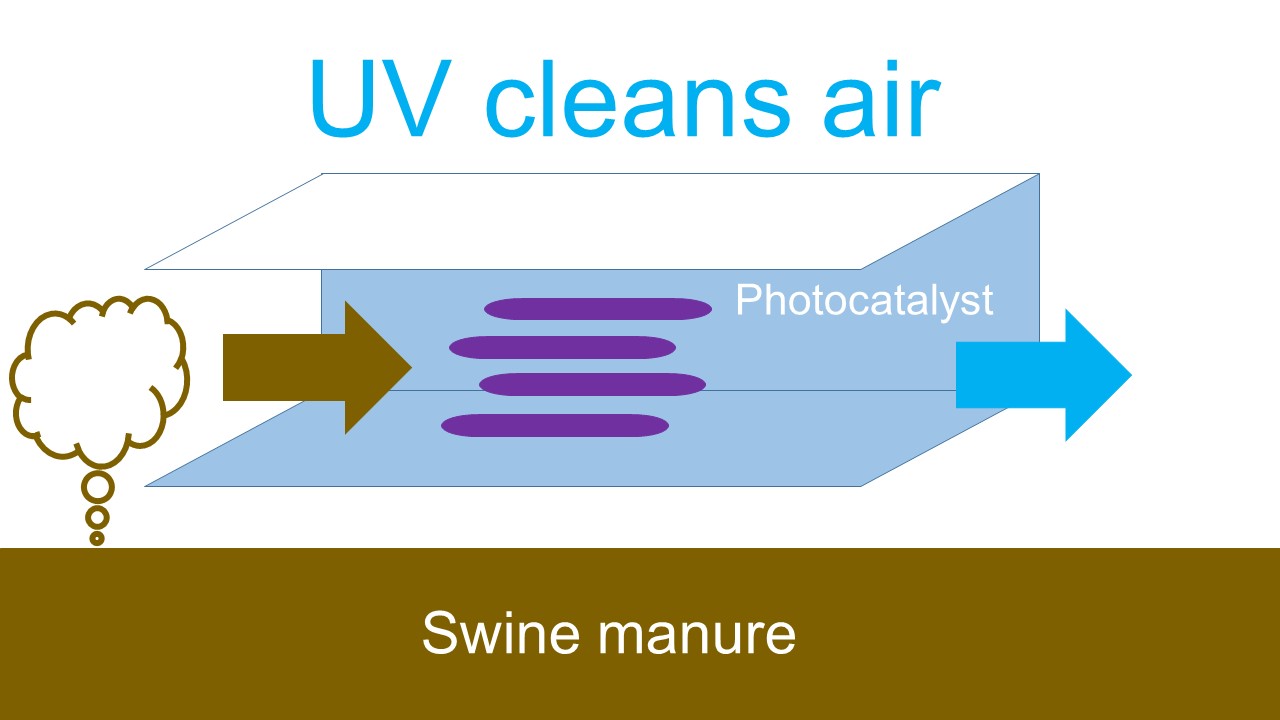It is essential to mitigate gaseous emissions that result from poultry and livestock production to increase industry sustainability. Odorous volatile organic compounds (VOCs), ammonia (NH3), hydrogen sulfide (H2S), and greenhouse gases (GHGs) have detrimental effects on the quality of life in rural communities, the environment, and climate. This study's objective was to evaluate the photocatalytic UV treatment of gaseous emissions of odor, odorous VOCs, NH3, and other gases (GHGs, O3 – sometimes considered as by-products of UV treatment) from stored swine manure on a pilot-scale. The manure emissions were treated in fast-moving air using a mobile lab equipped with UV-A and UV-C lights and TiO2-based photocatalyst. Treated gas airflow (0.25 to 0.76 m3/s) simulates output from a small ventilation fan in a barn. Through controlling the light intensity and airflow, UV dose was tested for techno-economic analyses. The treatment effectiveness depended on the UV dose and wavelength. Under UV-A (367 nm) photocatalysis, the percent reduction of targeted gases was up to i) 63% of odor, ii) 51%, 51%, 53%, 67%, and 32% of acetic acid, propanoic acid, butanoic acid, p-cresol, and indole, respectively, iii) 14% of nitrous oxide (N2O), iv) 100% of O3, and 26% generation of CO2. Under UV-C (185+254 nm) photocatalysis, the percent reductions of target gases were up to i) 54% and 47% for p-cresol and indole, respectively, ii) 25% of N2O, iii) 71% of CH4, and 46% & 139% generation of CO2 & O3, respectively. The results proved that the UV technology was sufficiently effective in treating odorous gases, and the mobile lab was ready for farm-scale trials. The UV technology can be considered for the scaled-up treatment of emissions and air quality improvement inside livestock barns.

